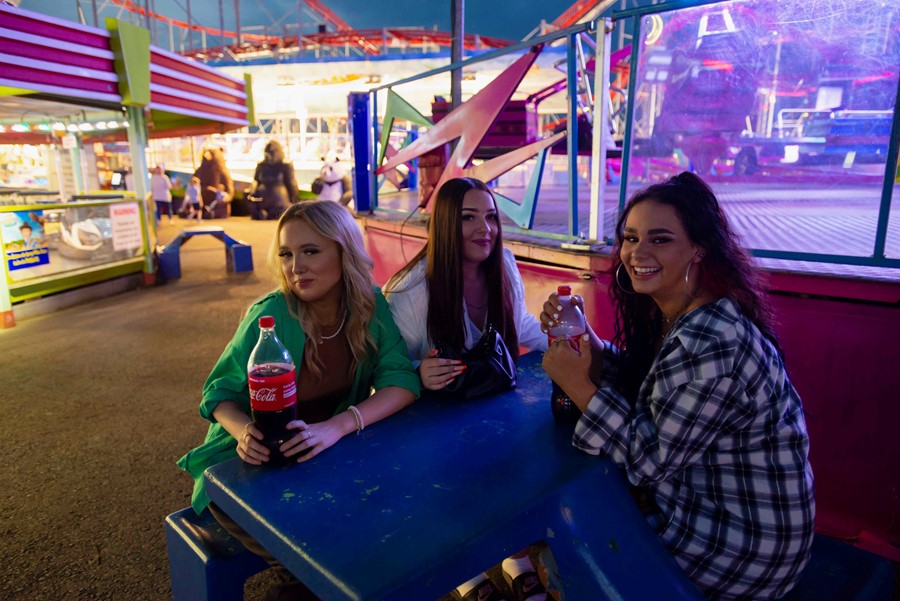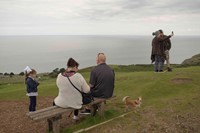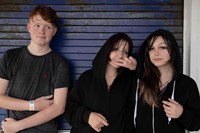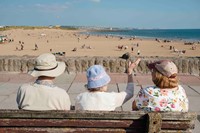“The coast is a metaphorical and literal edgeland, and it collects people and objects at the fringes of society,” says Jon Pountney, whose new photo series casts a loving eye over the Welsh coastline
Jon Pountney’s earliest memory of the coast is framed by a car window. As a kid in the early 1980s, he looked out at the derelict Filey Holiday Camp in Butlins from the backseat of the family Mini and took in the scene. “Its empty pools and faded art deco grandeur left an indelible mark on my imagination,” he recalls. “As did the excitement of the colours and sounds of local amusement arcades.”
That same wonderous gaze defines Pountney’s work today, with the car window swapped out for a picture frame. His photography, simple and straightforward, aims to capture the character of a place and its people through embedded storytelling rather than voyeurism. Focussing primarily on areas across South Wales, Pountney’s most recent project, Wales at the Seaside, is a rollercoaster through the Welsh coastline – though probably not the bits The Telegraph encouraged its readers to “escape” to during the pandemic. Instead, Pountney’s work spotlights beaches like Barry and Porthcawl – lands of perpetually wet sand and discarded polystyrene trays, bassline-blasting dodgems and Elvis conventions.
From lazy mornings to neon-lit nights, we’re greeted by emos, topless dads, pensioner couples and young families alike. The scenes are so alive you can practically smell the onions wafting from the hot dog stand and feel the back of your neck prickling with too much sun. Considering the impact of vivid, early memories like the one he had passing through Filey, Pountney points to a quote from modernist sculptor Barbara Hepworth: “Perhaps what one wants to say is formed in childhood, and the rest of one’s life is spent trying to say it.”
Though he grew up in rural Warwickshire, Pountney moved to Cardiff in the mid-90s to study art. The course he was enrolled on wasn’t very esteemed at the time, so he shunned the “old fart” lecturers and their hang-ups on “conceptual” stuff and taught himself photography instead, using the darkroom on a UWIC campus (which has since been demolished and, like much of Cardiff city centre, replaced by a soulless block of student flats). He’s since sayed in Wales, documenting all its different facets, from members of the Welsh Youth Parliament to urinals around the Valleys. “To be in Wales as an outsider was to notice and see stuff in a different way, and start to piece together the ideas that I still work with now – community and sense of place,” he explains.
His first commercial show, Wales at the Seaside launches at Gallery Ten in Cardiff later this month. Here, in his own words, Pountney reflects on capturing the surrealism of the seaside and why Wales became the main focus of his work.
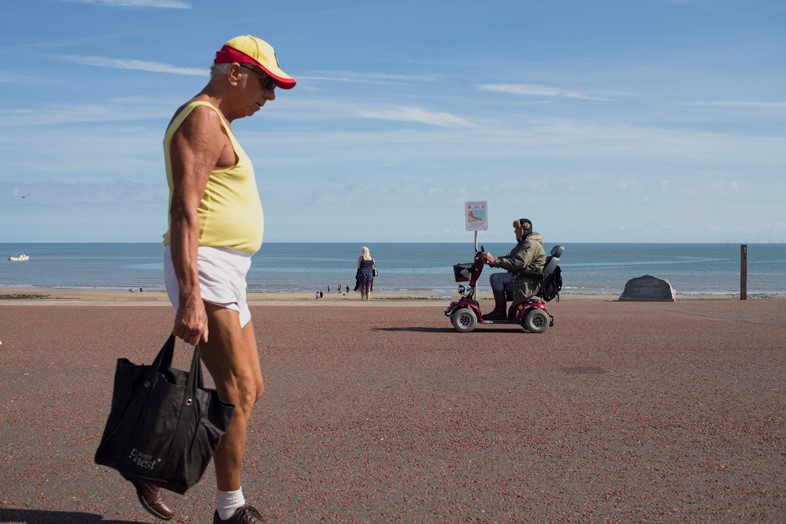
“The project came about through a very organic process over several years. My eyes are always open and I see every new place as an exploration, somewhere to try and tap into. I like to try and interpret place to people – to find the essence of the sometimes surreal and abstract constructs that make up places. The seaside represents that. Maybe it’s the archetype of that kind of idea. So over several years and for lots of reasons, I’ve been in lots of seaside places in Wales, and suddenly I realised that a body of work was forming. As an artist I’m fascinated by how the seaside can be seen as the quintessence of the British/Welsh experience, with its collection of lonely seaside resorts, coastal landscape and gaudy entertainment. The coast is a metaphorical and literal edgeland, and it collects people and objects at the fringes of society; people who are maybe wanting to escape the clamour of conventionality, or looking to slow down and retire.
“I try to cover things quite methodically, and I suppose quite obsessively. I like to look at stuff in different light, in different weather, and at different times, and then compare the atmosphere. Obviously I’m closer to places in South Wales, so I can get around places like Barry and Porthcawl easier. Historically these have been very working-class resorts, so I try to balance it with other places. I’m not trying to make a definitive view of the subject, just document my own exploration of it. You can’t aim to tell the total story – that’s impossible, and a bit vain. I suppose anything is just my interpretation, as the artist.
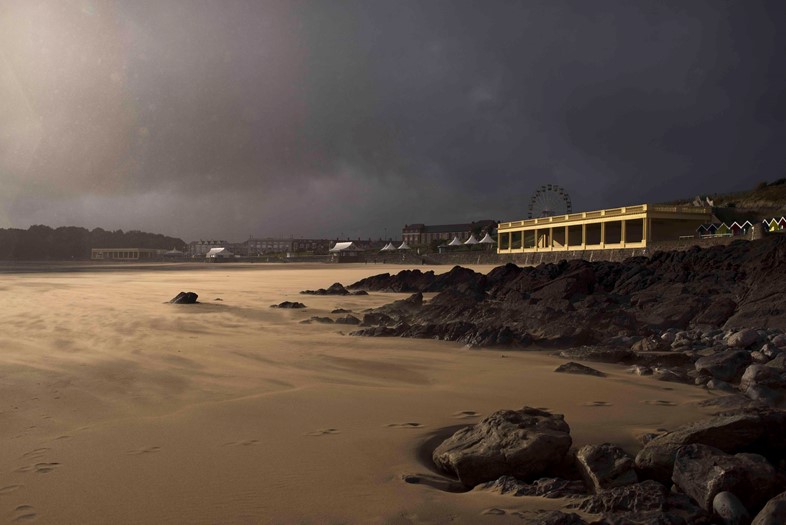
“I love Wales. I love the people, the accents, the places. The sand and stone, the trees, the sky, the rivers, the mountains. I realised that over the last ten years my only real subject has been Wales, and all its different facets. As I’ve improved as an artist, my interest in the subject has developed, and I’ve become much more adept at storytelling; I think the seaside is the apex of a ‘national’ experience, and I’m drawn to these fringes. I don’t know why. Colours, smells, sounds, the architectural mix of Victorian and newer buildings, decay, nostalgia.
“I like scenery, and there’s scenery in the project, but I’m interested in real people and all the stuff they bring with them. Seaside areas are pretty surreal. Porthcawl has giant burger and hot dog signs, caravans and rides, and you have to look with fresh eyes to see how mad it can all look piled on top of each other. And obviously with an exhibition or book, you can emphasise that with sequencing of the pictures. A middle-class project would be an interesting idea, though. That would be a very different seaside.
“It’s hard to say what differentiates the Welsh seaside from other coastal areas of the UK. Maybe the only difference is that of nationality, between the English and Welsh in particular. That grotesque, polarised end of nationality that you have in seaside towns, like a Hogarthian spread of flags, sunburn and chips. But, like I said, all life is there.“
Wales at the Seaside is at Gallery Ten in Cardiff from 24 June to 30 July, 2022.
